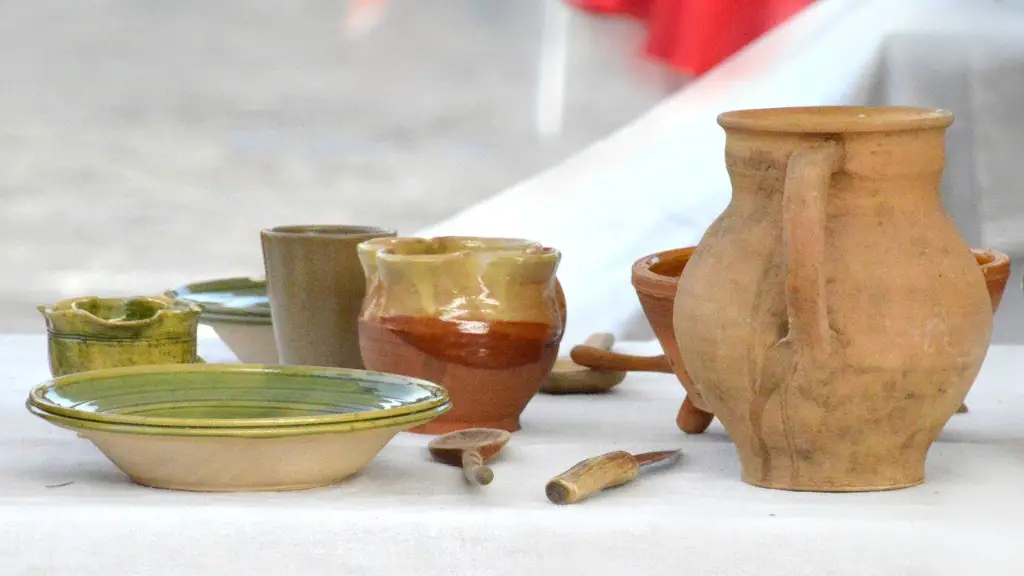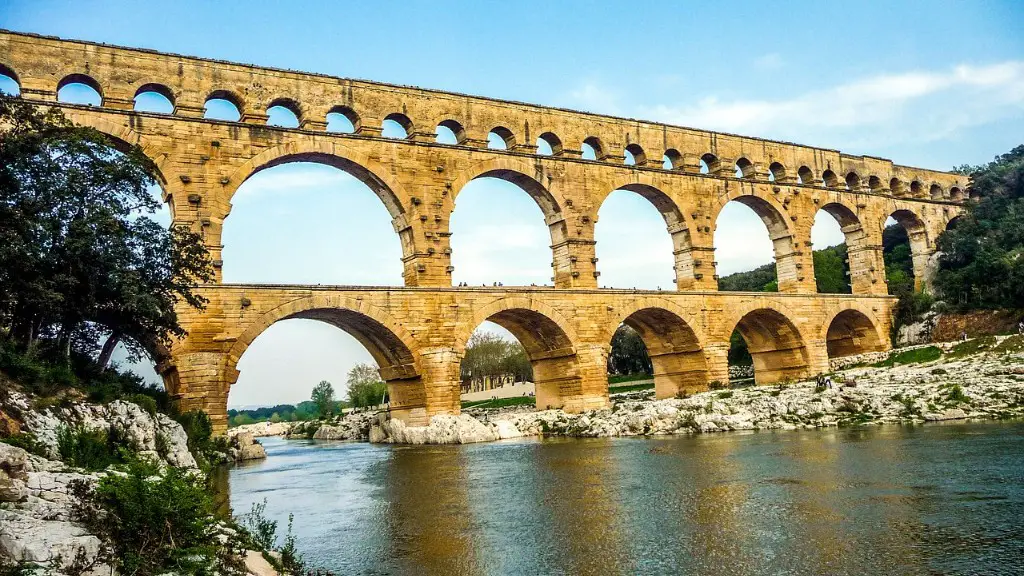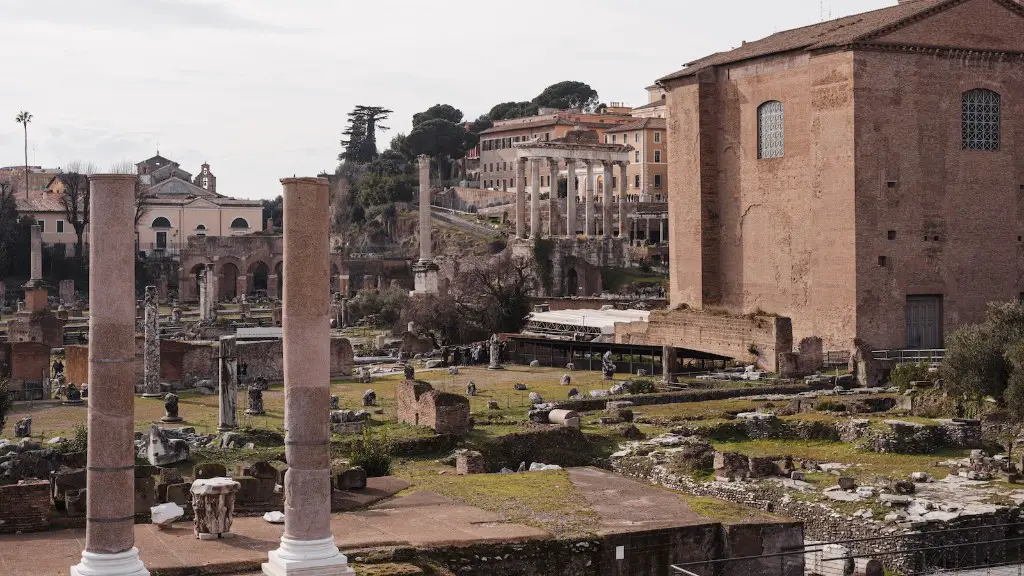Overview
The Ancient Romans had as many gods as they had traditions, and they were prime influencers in society. Religion was deeply integrated into the daily lives of the citizens of the Roman Empire, and the people often sought guidance in their worship of the gods. To answer the question “Where did the Ancient Romans worship their gods?”, one has to first look at the variety of places in which Ancient Romans practiced their religion.
Household shrines
At the most basic level, the Ancient Romans had family household shrines to the gods. These domestic shrines acted both as a private altar and sometimes as actual shrines for the veneration of deities. These often had basic offerings placed on them, such as flowers, incense, libations, and sacrifices to the gods. Slaves and servants would sometimes take care of these family altars.
Temples and sanctuaries
The most significant places of Ancient Roman worship were their temples and sanctuaries. Some of these structures went back to the Archaic period and predate the Roman Empire. They were used both for the state cult of the deity, as well as for the more personal devotions of worshippers. According to experts, these temples had basic setup, with a often with a row of columns on one side, an entranceway flanked by columns, and multiple statues of the god. Here, the priests and priestesses would perform the rites and offerings on behalf of the worshippers. These rituals were often linked to festivals where the worshippers would congregate to give offerings to the gods.
Other places
The Ancient Romans also worshipped in other places such as the public forum, baths, and even households. Worship of the gods was embedded in the everyday life of the Ancient Romans. This is why they were sometimes depicted worshipping the gods in unexpected places. They could also practice their worship away from the temples in other sites of religious import, such as sacred groves.
Rituals and beliefs
Different types of rituals have been documented for the Ancient Romans. Some of these rituals involved making offerings, such as fruits, flowers, animals, and even grain. Offerings could also involve more elaborate rites, such as sacrifices of animals or the burning of incense. Acts of worship in private households usually involved offering food and wine to the gods.
Pantheon of gods
The Ancient Romans had a vast pantheon of gods, with a different deity for almost every aspect of life. This included gods such as Jupiter to rule over the heavens, an underworld goddess Proserpina, and a range of gods protecting the city. Many of these gods were assimilated from other cultures, as the Ancient Romans encountered new gods as they conquered new lands. This can be seen in the adoption of Greek gods such as Atlas or the worship of Egyptian gods such as Isis.
Rituals and customs
The rituals used to worship the gods were often highly intricate and involved complex offerings and ceremonies. These rituals often used special implements and decorations that were specific to each god and cult. These practices could sometimes include elaborate costumes, chanting of ancient hymns, and delivering offerings to the gods. Some of these ceremonies also involved prayers and sacrifices to invoke the protection of the gods. The rituals and customs practised by the Ancient Romans have been documented in some detail by authors such as Ovid and Cicero.
Symbolism in worship
A key part of Ancient Roman worship was the symbolism of the gods’ power. Ritual offerings, for example, often had symbolic meaning. This symbolism varied according to the god being offered to, ranging from offerings of flowers or wine to honour the gods to sacrifices of animals to appease the gods. Symbols such as fire or olive branches also had significance and could be used as part of a religious ceremony or offering.
Impact of Christianity
The coming of Christianity marked a shift in how the Ancient Romans practiced their religion. With the adoption of Christianity as the official religion of the empire, pagan worship was increasingly marginalised. As the Christian faith displaced the old ways of worship in the Roman Empire, the old gods were slowly forgotten and the places in which they had been worshipped were neglected. Yet, the religious practices of the Ancient Romans live on in the present day, as evidenced by some modern pagan rituals.
Legacy and influence
The Ancient Romans also left an indelible mark on modern-day religion and culture. Some of the customs and beliefs that the Ancient Romans practiced live on today in practices such as Easter eggs and Christmas trees. The worship of their gods had an enormous influence on their art, literature, and other cultural institutions, including the Roman Catholic Church. This legacy of Ancient Roman worship is still a major influence in the modern world.
Modern practice of Ancient Roman worship
Today, there are still some people who worship the gods of the Ancient Roman pantheon. These modern worshippers seek to revive these old practices, often by combining elements of modern paganism, Christianity, and other beliefs. They often conduct rituals to celebrate the gods of the Ancient Romans, such as those related to the spring and harvest festivals. They also honour the Roman gods through art and literature, as well as through practices such as meditation, contemplation, and prayer.
Conclusion
The answer to the question of where the Ancient Romans worshipped their gods is not a simple one, as the cults of the gods were deeply ingrained in their daily lives. They worshipped in temples, sanctuaries, and even in their own homes. To honour their gods, they used rituals and offerings, and they adopted myths and symbolism to express their devotion. All of these forms of Ancient Roman worship still have an impact in the modern world, with some people still upholding these beliefs and practices today.



